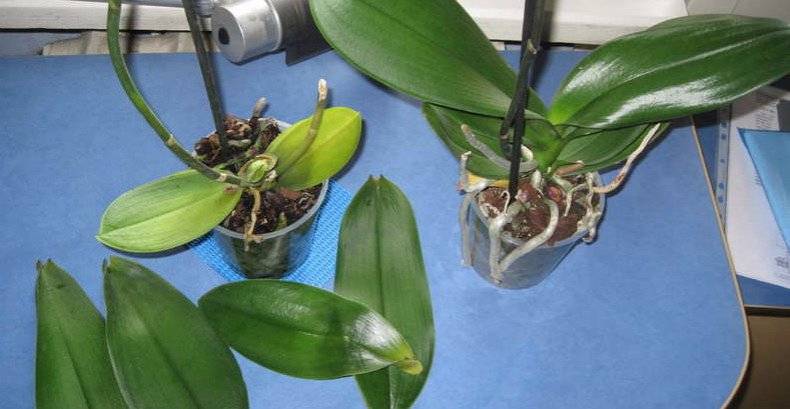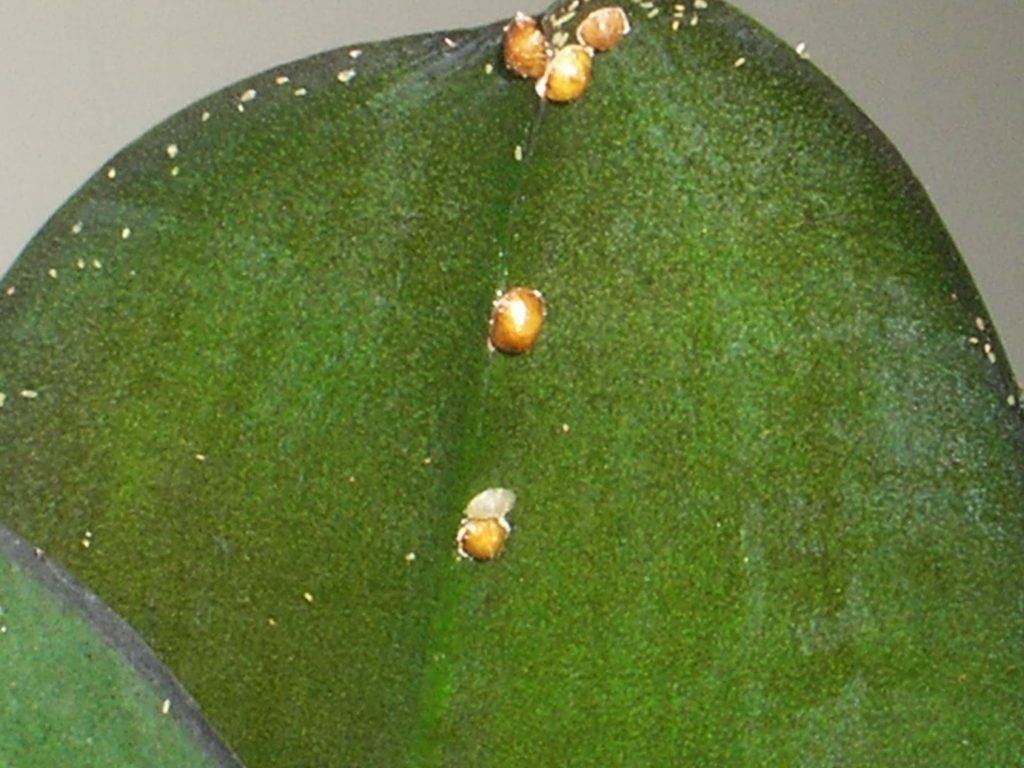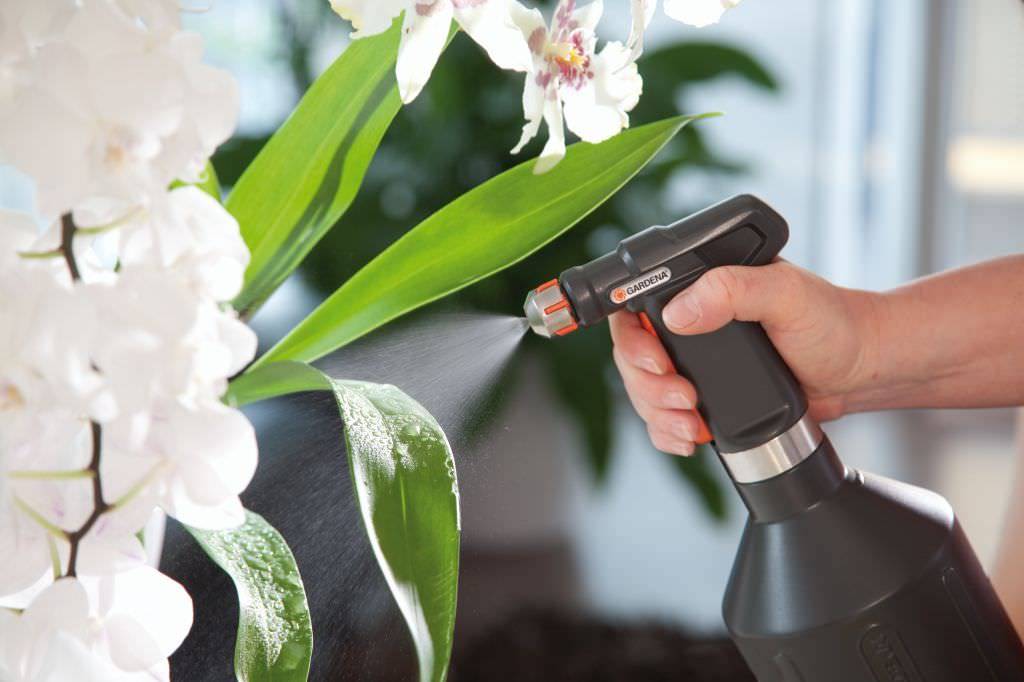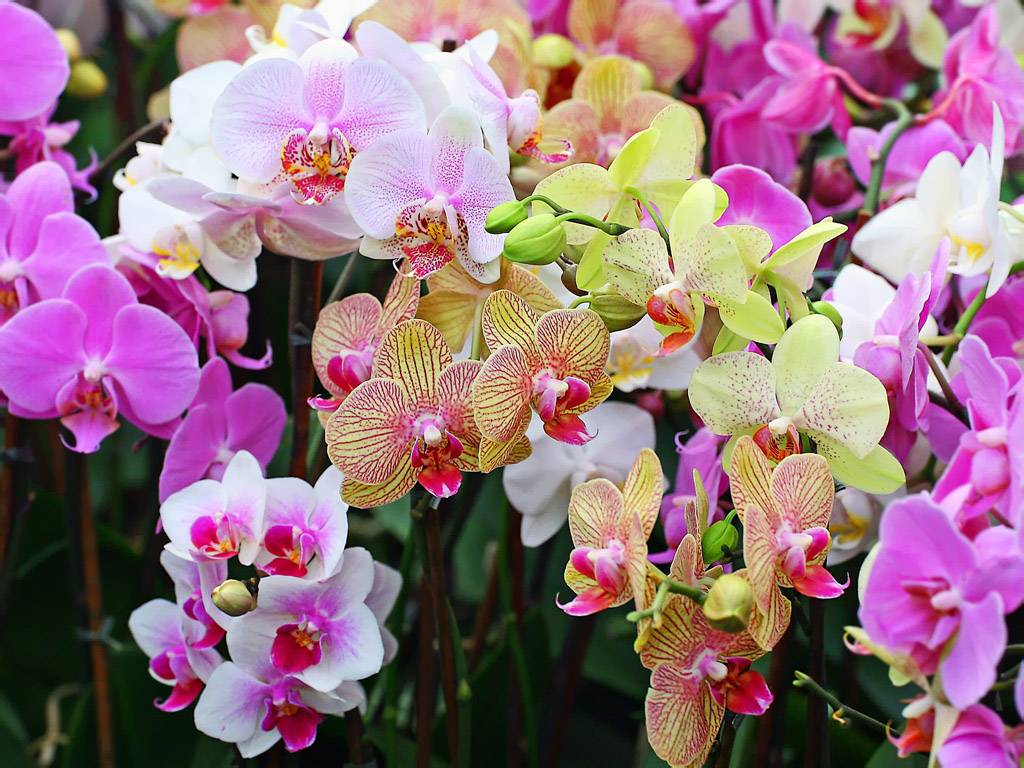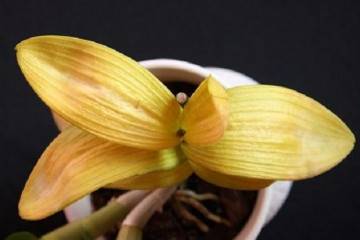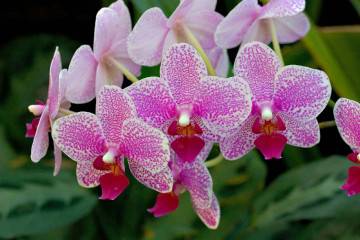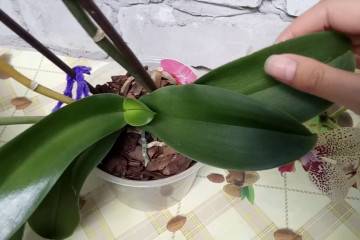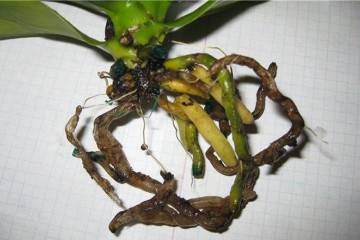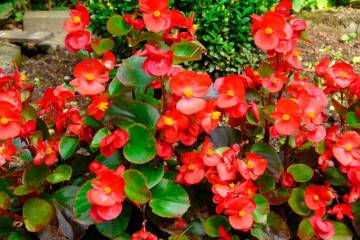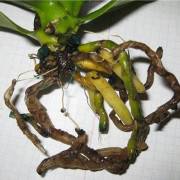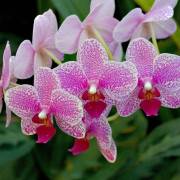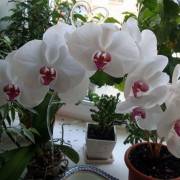Orchid leaves: main diseases and methods of dealing with them
Content:
The orchid can be confidently called one of the most beautiful flowers. At the same time, she is incredibly moody, any mistake in leaving can lead to a variety of problems. One of the main ones is that the leaves of the orchid fall off, become covered with a network of cracks, dry out and curl. Sometimes it is quite simple to save a tropical plant - it is enough to reconsider the conditions for keeping a flower and caring for it. Folk remedies and special preparations come to the rescue.
Possible problems
Experienced growers know: leaves are the most vulnerable spot of the original flower, especially for such a variety as Phalaenopsis. Among the main problems are the following:
- drying out;
- subsidence - partial or complete;
- sudden yellowing;
- various deformations of the sheet plate, for example, twisting.
Sinking
Florists may notice that the leaves began to fall off abruptly, they simply can spontaneously separate from the stem. What if all the leaves of an orchid have fallen off? First of all, you should pay attention to the condition of the plant root. If they show signs of infection by a virus or fungus, it will no longer be possible to reanimate the flower.
Sometimes the fall of the green mass is a sign of nutrient deficiency in the substrate. In this case, it is recommended to purchase a special mineral fertilizer for orchids and regularly apply it to the soil.
Wither and turn yellow
When the leaves of an orchid turn yellow and wither, not every florist, especially a beginner, knows what to do. Experts say: most often this problem is associated with an excessively high air temperature in the room where the orchid grows. If the cause is not eliminated, the plant may stop blooming, and its peduncles will noticeably deform. The stem of the orchid may turn black.
The increased air temperature leads to air starvation, an acute shortage of nutrients. It is not difficult to fix the situation, you should move the orchid to a cool place, ventilate the room more often. The leaves will quickly return to their usual color and healthy appearance.
Yellowing of the foliage deserves special attention. Most often, experienced florists say, it indicates that the substrate is poor, the flower needs feeding.
Desiccation
Speaking about why the leaves of orchids dry up, growers are advised to control the level of soil moisture. Often it is the drying out of the soil (and therefore the roots) that leads to the fact that the green mass begins to dry out. Abundant watering will help restore the plant. After it, you should loosen the soil and mulch it so that moisture lingers in the soil longer.
Other
Not every gardener knows why the leaves of an orchid are cracking, their middle softens.The most likely cause of this problem is plant dehydration, but there are other options. These include, for example:
- fungal infection;
- viral infection;
- attack of insect pests.
All of the above leads to the fact that the turgor of the leaves changes, they become soft, darken. Moreover, the leaf mass can become covered with mold or an unpleasant-smelling sticky coating that looks like moss. The plant stops growing, it can completely rot.
In especially severe cases, the entire surface of the orchid leaves is covered with a white bloom. It is so dense that it is impossible to even distinguish venation. The leaf looks more like a pattern made on opaque white paper.
The main causes of diseases
Plants usually begin to shed their leaves or change their color and shape for more than one reason, usually a variety of reasons. The most common are the following:
- attacks by parasites or insect pests;
- irregular introduction of nutrients into the soil;
- lack of fertilizers;
- low level of air humidity;
- stagnation of moisture in the substrate.
Sometimes the reason that a plant sheds leaves or changes their color may be infection with various infections - viral, fungal, bacterial. Most often this happens when transplanting an indoor flower into a new infected soil brought from the garden.
Another reason why problems such as drying of the leaf mass and its wilting may appear is sunburn. Orchids do not tolerate direct sunlight on roots, flowers and leaves. Keeping a flower in a well-lit place can cause you to lose it. First, the leaves will begin to curl and dry, then the whole flower will be affected.
Sometimes the root of the problem is lack of nutrients. Orchids like fertilizers, which include potassium, nitrogen and phosphorus. Without them, a houseplant simply cannot fully grow and develop, build up green mass and bloom luxuriantly.
Leaves can fall off and turn yellow if the plant is affected by pests. Usually these are aphids, spider mites, scale insects, nematodes. If any signs of a pest attack are found on the orchid, it should be treated as soon as possible. At home, this can be done using insecticide treatment.
Resuscitation methods
Florists say: in the early stages of almost any disease, an orchid can be cured using folk methods. However, they warn, you shouldn't wait for a miracle. An instant effect is impossible due to the lack of effectiveness of such drugs in comparison with industrial drugs.
However, special products for orchids also have their drawbacks: their composition is quite aggressive, they can negatively affect the state of a weakened flower, and sometimes their cost is several times higher than the price of home remedies.
Folk remedies
Quite often, inexperienced growers ask themselves: is it possible to resuscitate orchids without a growth point and leaves using any gentle methods.The safest and easiest option is to transplant a plant, before which partial root pruning is required.
It looks like this:
- Carefully remove the orchid from the pot.
- Carefully but gently free the roots from the old substrate.
- Use a sharp knife to cut off any damaged areas.
- Transplant the flower into a new container, after laying out the drainage layer and nutrient mixture.
In the first few days after transplanting, the orchid is quite unstable, and therefore it will need support. Caring for her this time also includes providing a lot of daylight, airing the room where the flower grows, as well as protection from sudden changes in temperature and drafts.
Another effective way to save phalaenopsis is to remove the plant from the pot, place it in clean water at room temperature (the water must be drained after 12 hours, and then after the same period of time, pour a new portion of the liquid). It is important that the air temperature in the room does not drop below 25 ° C. After 3-6 months, the plant will have new roots.
Chemical
Another issue that deserves attention is how to revive an orchid with roots, but no leaves. In this case, if the problems with the foliage were caused by a fungus, proven chemicals - fungicides - will come to the rescue. They quickly and effectively deal with the fungus, while simultaneously preventing its occurrence in the future.
The most effective drugs are Vitavax and Gaupsin. When using any commercial fungicides, it is extremely important to follow the instructions. Usually, the preparation of the solution looks like this: it is necessary to dilute the powder in half with clean water (it is advisable to warm it up a little), stir until it is completely dissolved. The most convenient way to do this is in a regular plastic bottle.
Biological methods
Experienced flower growers know perfectly well how to save a flower if all the leaves of an orchid have fallen off. They say Phalaenopsis responds quite well to biological resuscitation techniques. To literally revive the flower, you will need to treat it with active additives called growth stimulants, for example, phytosporin. Thanks to him, the orchid will be able to restore its vitality, strengthen and develop the root system, and adapt to any unfavorable conditions. Just a couple of treatments are enough for the foliage to stop falling off.
Further care of the orchid
If the orchid was able to recover, it is necessary to provide it with proper care, because a weakened houseplant can get sick again. The principles of care are quite simple, you need:
- provide enough light;
- fertilize regularly;
- avoid stagnant water.
To catch problems, experienced florists recommend regularly examining phalaenopsis. So it is possible in the early stages to detect such symptoms of diseases as falling leaves, their yellowing or wilting, the appearance of cracks on the plates. Emergency measures should be taken if at the very base of the orchid stem the leaves wrinkle, fall off, burst or dry out, otherwise the plant may die.
Experts note: most of all problems arise due to unsuitable conditions in the room where the flower is grown, non-compliance with simple rules for caring for the plant.The tropical beauty of the orchid requires increased attention and delicacy, therefore, if the grower does not have the opportunity to create the proper microclimate for the phalaenopsis, another less capricious plant should be chosen.

